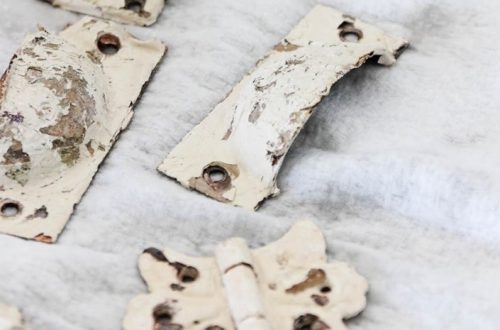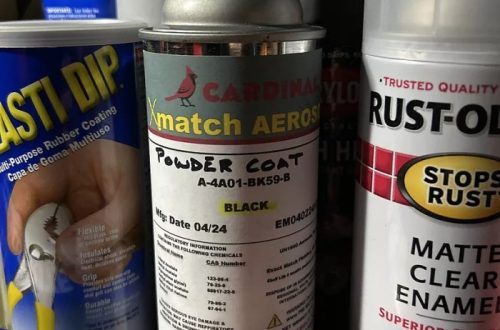Overview of Salt Extraction Methods
When looking to extract salt from water, multiple methods can come in handy. The objective, in any case, is to separate the salt, or sodium chloride, from the water, leaving behind pure salt crystals. There are two main physical methods that dominate this process. First, there’s evaporation, which involves heating the salt water until the water turns into vapor, leaving salt behind. This method is direct and effective, especially for small batches. Secondly, there’s filtration, which is often used to remove solid impurities from the saltwater before or after the evaporation. Each method has its pros and cons, and the choice depends on the resources available and the amount of saltwater you’re dealing with.
To ensure a successful extraction, it’s crucial to understand the science behind salt and water interaction, prepare the right materials, and follow safe procedures. In the following sections, we will cover the details of each method, starting with the preparation of your saltwater solution, moving through the evaporation and filtration methods, and finally, we will discuss how to properly dry and collect your salt, all while following safety precautions. Let’s dive into the science next, to understand how salt and water combine, and how we can use that knowledge to our advantage in the extraction process.
The Science Behind Salt and Water
To extract salt effectively, it’s key to understand how salt (sodium chloride) and water mix. Salt dissolves in water, forming saltwater, or saline solution. Water molecules pull apart salt ions, enabling them to mix evenly. This process, called dissolution, is crucial for salt extraction using evaporation. With heat, water evaporates, but salt does not. As water turns into vapor, salt ions re-bond, forming crystals.
Knowing this, we can harness the evaporation method. Heat accelerates water vaporization, leaving salt behind. When water evaporates completely, we get dry salt. To succeed in this, we need sun or a stove for heat, time for evaporation, and a container for the mixture. Patience is also vital. The process can’t be rushed without affecting the salt’s quality.
Remember, the faster the water evaporates, the more irregular the salt crystals. Slow evaporation tends to produce purer and better-formed crystals. This knowledge is the basis for understanding which physical method can be used for obtaining a sample of salt from a small beaker of salt water.

Materials Needed for Salt Extraction
To start extracting salt from a small beaker of saltwater, gather materials first. Here’s what you need:
- A Small Beaker or Container: Choose glass or heat-resistant material.
- Source of Heat: Whether it’s a stove or the sun, you need a heat source.
- Evaporation Dish: A flat dish where water can spread thin and evaporate fast.
- Filtration Setup (optional): Includes filter paper and a funnel if you’re using filtration.
- Stirring Tool: A spoon or stick to stir the solution can help even out heating.
- Storage for Salt: Have a dry container ready for storing your extracted salt.
You can find most items in a basic kitchen or purchase them easily. Each material plays a role. The beaker holds your water and salt mix. Heat causes evaporation, separating water from salt. The evaporation dish provides a surface for the process. If impurities are a concern, filtering them out is essential. Stirring promotes uniform evaporation. Lastly, you need storage for the end result – pure salt. Gather these materials before moving to the next steps of preparing your saltwater solution.
Preparing the Saltwater Solution
Before you start the actual salt extraction, preparing a proper saltwater solution is vital. The solution should have the right concentration of salt, as too much salt can slow down evaporation, while too little may not yield enough salt. Here’s how to prep your solution:
- Measure the Water: Pour the precise amount of clean water into your small beaker.
- Add Salt: Gradually mix in salt, stirring constantly, until no more dissolves.
- Check Saturation: The solution is ready when you see salt at the bottom, meaning it’s fully saturated.
- Clear Impurities (Optional): If your water is impure, pre-filter it before adding salt.
This preparation step sets you up for an efficient extraction process using the evaporation method. Making sure the solution is well-prepared will affect the quality and quantity of the salt you collect. Double-check that you have everything ready and proceed to the next step of the guide, employing the evaporation method for obtaining a sample of salt from the small beaker of salt water.

Evaporation Method for Salt Extraction
Using the evaporation method is straightforward for extracting salt. It is one of the simplest physical methods for obtaining pure salt from a small beaker of saltwater. Here are the key steps to follow:
Pour Saltwater into Evaporation Dish:
Take your prepared saltwater solution and pour it into the evaporation dish. A larger surface area helps speed up evaporation.
Place the Dish in Sunlight or over a Heat Source:
Position your dish where it gets plenty of sun or over a mild heat source, like a stove.
Wait for Water to Evaporate:
Leave the dish undisturbed. The water will begin to evaporate, which might take several hours or days, depending on the heat intensity.
Observe Salt Crystal Formation:
As the water evaporates, you’ll see salt crystals forming. These will grow as more water turns into vapor.
Collect Dry Salt:
Once all the water has evaporated, collect the dry salt crystals from the dish.
This method is popular due to its simplicity. All it requires is a beaker, saltwater, an evaporation dish, and a heat source. It can be done at home or in a lab setting. Moreover, using the evaporation method ensures that you obtain a sample of salt without any complex equipment.
Filtration as an Alternative Method
While evaporation is a primary method for extracting salt, filtration offers an alternative approach. This physical method is particularly useful when impurities are present in the saltwater and need to be removed before or after the evaporation process. Here are the steps to follow using filtration:
- Set Up the Filtration System: Position the filter paper inside the funnel over the receiving container.
- Pour the Saltwater: Slowly add the saltwater solution into the funnel, so it passes through the filter.
- Capture Impurities: Solid particles and impurities will stay on the filter paper, while the filtered water will collect in the container below.
- Evaporate the Filtered Water (if necessary): If you still need to extract salt, proceed by evaporating the filtered water using the previously described evaporation method.
- Collect the Salt: After evaporation, the remaining salt can be collected from the container.
This process may require more steps than direct evaporation but can result in a purer sample of salt. The key is a well-set-up filtration system and patience to allow the solution to pass through completely. Filtration can be combined with evaporation to optimize the extraction of salt especially from a small beaker of salt water.

Drying and Collecting the Salt
Once you have used the evaporation method to separate salt from water, the final process of drying and collecting the salt remains. Here’s how to achieve this crucial last step:
- Assess Dryness: Check if all water has evaporated. Ensure the salt is thoroughly dry before collecting.
- Scrape the Salt: Use a clean and dry tool, like a plastic spatula, to gently scrape the salt off the evaporation dish.
- Transfer to Storage: Move the salt into a dry, airtight container to prevent it from absorbing moisture from the air.
- Label the Container: Clearly mark the container with the contents and date of extraction for future reference.
After the salt is collected, give the evaporation dish a thorough wash to remove any residual salt. Store your container in a cool, dry place to keep the salt in its best condition. By following these straightforward steps, you’ll ensure a sample of pure salt is obtained from your small beaker of salt water.
Safety Precautions and Best Practices
When extracting salt using physical methods, safety is key. Here are essential tips to follow:
- Wear Protective Gear: Always wear gloves and safety goggles. This protects against splashes.
- Handle Heat with Care: Use oven mitts or potholders when near a heat source. Prevents burns.
- Work in a Ventilated Area: Ensure good airflow, especially if using a stove. Reduces inhalation risks.
- Keep Equipment Clean: Clean all tools before and after use. Prevents contamination.
- Monitor the Process: Never leave the evaporation in progress unattended. Prevents accidents.
- Label Properly: Mark all materials and containers clearly. Avoids mix-ups.
- Store Salt Right: Use airtight containers for the salt. Keeps it dry and clean.
Follow these practices for safe, efficient salt extraction from a small beaker of salt water. They help to prevent accidents and ensure a pure salt sample.




